| |
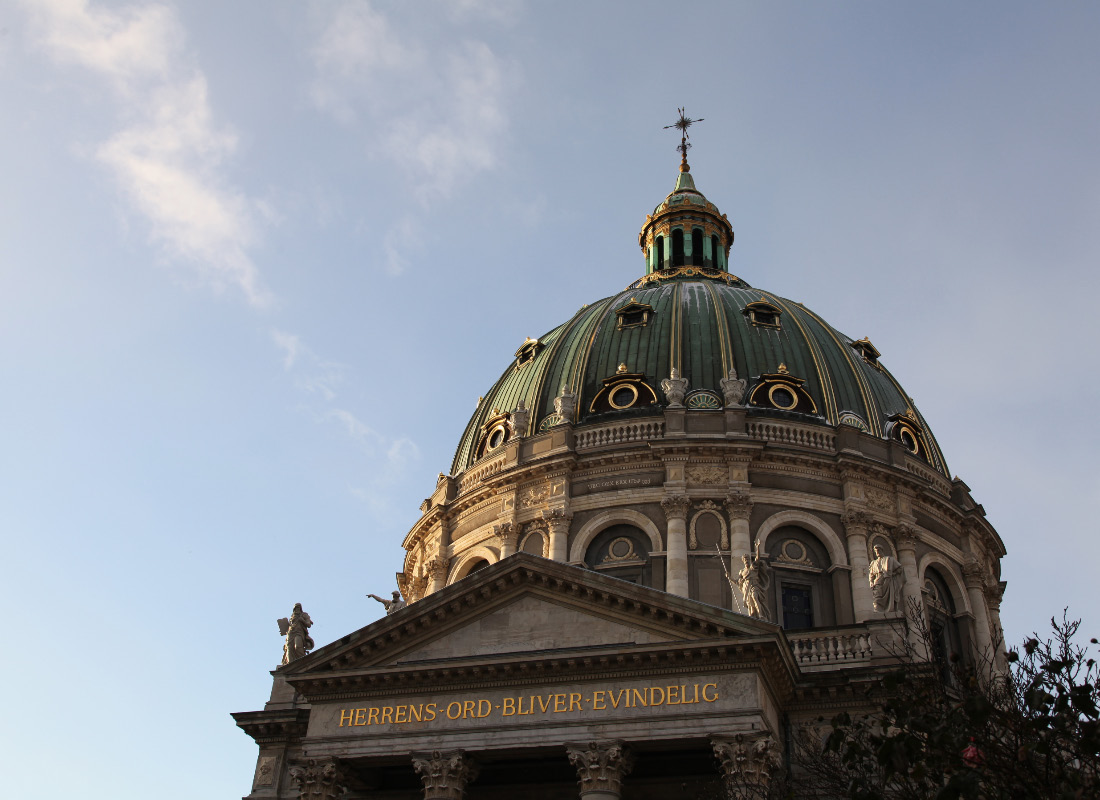 |
|
| |
HERRENS ORD BLIVER EVINDELIG – The Word of the Lord Endureth for Ever — Frederiks Kirke (Marmorkirken) — Frederik's Church (The Marble Church) |
|
Det vigtigste formål med denne hjemmeside er at give og udbrede information om filmen United European Christendom – Heal the Schism Now! (Forenet Europæisk Kristendom – Helbrede Skisma Nu!) Det vigtigste formål med denne film igen er at gøre nogle bidrag til en genforening af den Ortodokse-Katolske Kirke og til etablering eller reetablering af større civilisatoriske enhed og integritet inden for kristenheden, der begynder med europæisk kristenheden. Denne film har til hensigt at tale for samfundet i den kristne tro. I vigtige sanser Forenet Europæisk Kristendom – Helbrede Skisma Nu! er to film, snarere end to dele af en film, fordi de to fag står så langt fra hinanden. Et emne, Europæisk Kristendom, er enormt vigtigt. Det andet emne, Kirken, er uforligneligt vigtigere. Forvent ikke en mangel på tilsyneladende modsætninger i at forstå, hvordan samfundet af den kristne troende bør fortsætte på disse to spørgsmål.
Den første del, lad os kalde det den første film, forsøger at beskæftige sig med teologiske, ekklesiologiske og andre spørgsmål i forbindelse med det 5. århundrede skisma i Kirken og især med den Store Skisma i Kirken, at der efter sædvane er dateret til 1054 , der udfoldede sig mellem det 9. århundrede og det tidlige 13. århundrede og videre frem. I betragtning af de problemer, der er involveret, der beskæftiger sig, som de gør med vores kamp for at forstå Guds hensigter med sin kirke, kan tvister ikke forstås som useriøs. I betragtning af den forståelse deles af alle kristne i Guds befaling mod sådan enhed, og afspejlede særlig grad i den hellige Skrift gengivet på denne hjemmeside, kan tvister ikke forstås som un-overvindes.
Aktuelle situation, som også skrifter af fremtrædende tænkere i disse områder og dialogerne mellem og programmer ledende Kirkens hierarchs, tyder på, at virksomhedernes genforening er mulig blandt kirker Tradition, dem, der har bevaret sakramenterne – frem for alt Eukaristien – og apostoliske Arv og gyldigt ordinerede præstedømme. Disse, i stigende rækkefølge i forhold til antallet af mennesker i deres samfund af troende, er (1) Orientalsk Ortodokse Kirker; (2) de Ortodokse Kirker, der er i fællesskab med Patriarken af Konstantinopel; og (3) den Katolske Kirke. Til dette fællesskab aftalte liste, ville forfatteren af denne film tilføje en fjerde gruppe. Mens både de Ortodokse Kirker og Katolske Kirke officielt forsøge at behandle kirkerne i denne gruppe ved ikke at behandle dem, ja så vidt muligt ved at ignorere deres eksistens, kan denne fjerde gruppe siges at være de Ortodokse Kirker i Byzantine- slavisk liturgiske tradition, som ikke er i fællesskab med Patriarken af Konstantinopel. Den Ukrainske Ortodokse Kirke, Kiev patriarkatet er kun den mest talrige af de mange kirker, som er fanget i denne kirkelige rod.
Lige så vigtigt som protestanter er for Kristendom, fremkomsten af protestantismen og de utallige splittelser i den vestlige kirke, som begyndte (med nogle små undtagelser) fra det 16. århundrede er ikke en del af denne første film. De er dog i høj grad en del af historien, der er genfortalt i den "anden" film. Den anden film inviterer beskueren til at indgå i et civilisatorisk introspektion, hvad har været udgifter til kristen splittelse. Den består hovedsagelig af en række casestudier i udgifterne til skisma. Det opfordrer også seeren til at engagere sig i nogle informeret spekulationer om, hvad Kristendom, der begynder med Europæisk Kristenheden kan forvente, bør situationen for kristne splittelse fortsætter. Hvordan tror du, vi har gjort? Vej i den rigtige retning?
Fællesskabet af de trofaste vil i sidste ende afgøre, om denne kirke enhed sker eller faktisk ikke ske. Kirken hierarchs har deres udnævnte roller. De er ikke klar til at underskrive en fælles erklæring eller apostoliske forfatningen eller nogle andre dokumenter genoprette Communion og enhed, men selv hvis de skulle gøre det, uden den støtte fra samfundet af den kristne tro, sådan erklæring ikke ville, som det gjorde i 1439 ... og den største kirke i Kristendom blev en moske. |
| |
|
|
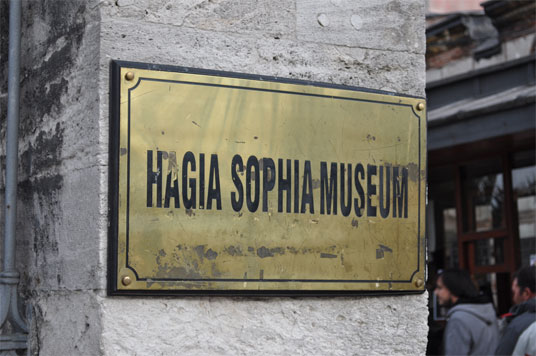 |
|
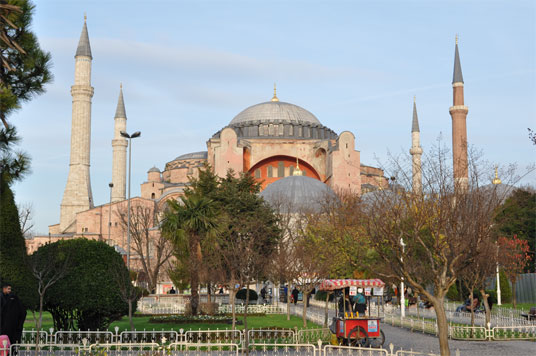 |
| |
|
|
Så du skal beslutte. Vil du have denne enhed?
Venligst overveje dette spørgsmål igen, efter du har set filmen. |
| |
|
|
"Splittelse åbent modsiger vilje Kristi giver en anstødssten for verden, og påfører skade på den mest hellige årsag til at forkynde de gode nyheder for hele skabningen ... At tro på Kristus betyder at ønske enhed, til at ønske enhed betyder for ønsker Kirken, til at ønske Kirken betyder at ønske det fællesskab af nåde, som svarer til Faderens plan fra al evighed sådan er meningen med Kristi bøn: 'Ut unum sint.' "
Johannes Paul II i hans eponyme encyklika 1995
"Væggene, der skiller os ikke når op til himlen."
Metropolitan Platon i Kiev |
|
| |
|
|
| Man foreslår |
|
Gud afhænder |
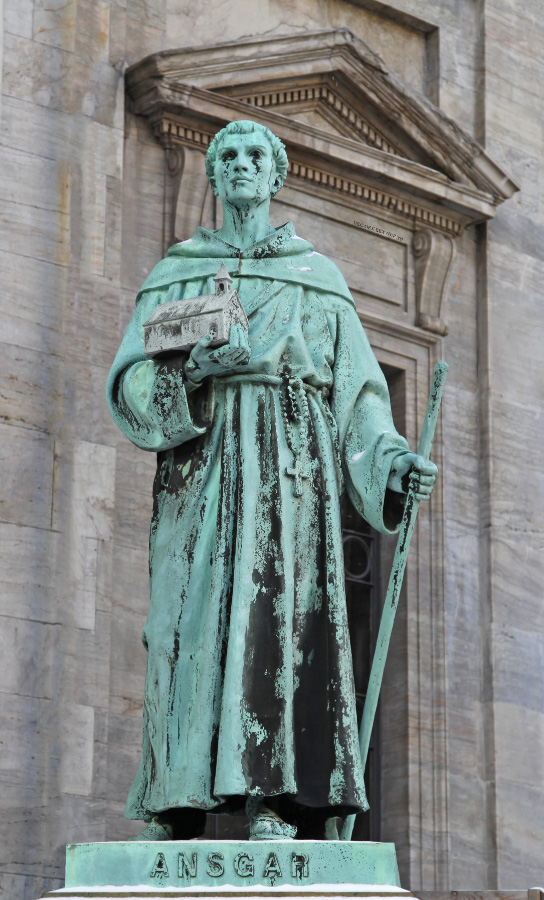 |
|
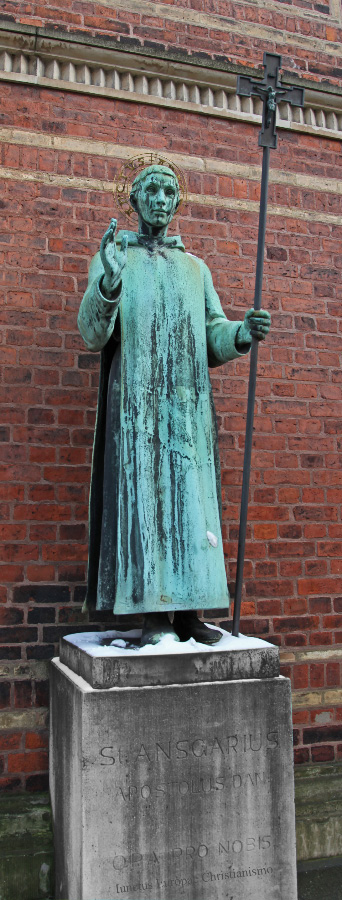 |
Sankt Ansgar Nordens Apostel — Saint Ansgar Apostle of the North
(* 8 September 801, Amiens – Bremen 3 February 865 †)
Guided by visions, through severe political turmoil, including
a Danish raid of Hamburg in 845 Anno Domini in which pagan Danes
plundered and destroyed the diocesan treasures and library, Saint Ansgar
persevered in a vast missionary effort throughout the northern reaches of
European Christendom. Ansgar's work included a two-years (848 - 850) mission
to Sweden during which he successfully averted a pagan reaction to earlier
Christian evangelization. Pictured bronze at Frederiks Kirke (Marmorkirken) —
Frederik's Church (The Marble Church), København – Copenhagen. |
|
Sankt Ansgars Katolsk Domkirke, København —
Saint Ansgar's Catholic Cathedral, Copenhagen
Consecrated 1 November 1842
Saint Ansgarius Apostolus Dania
— Ora Pro Nobis —
|
| |
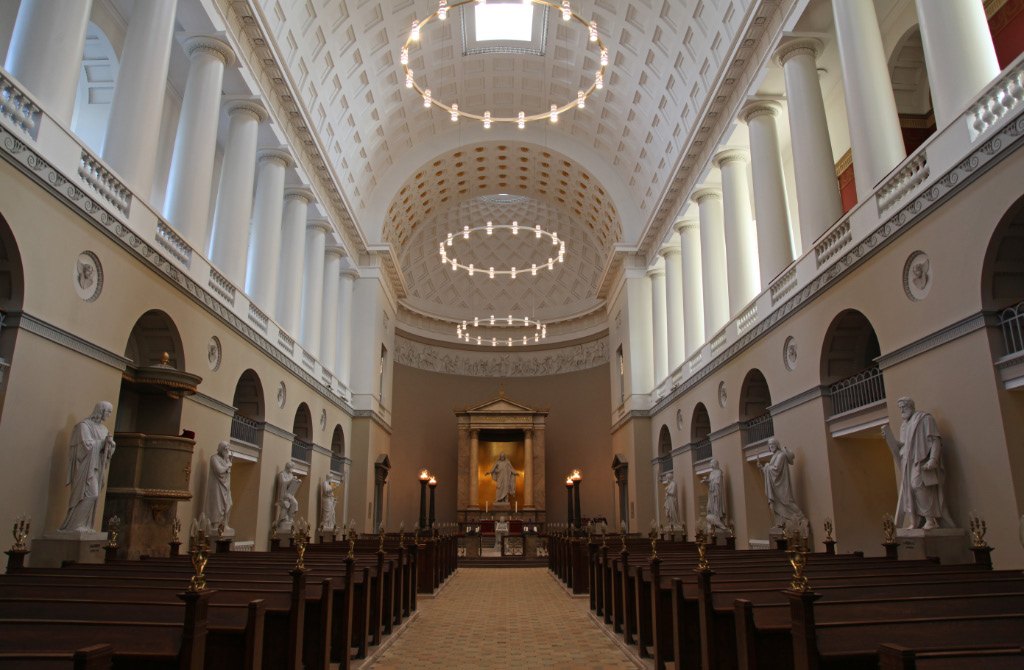 |
|
| |
Vor Frue Kirke — The Church of Our Lady, the National Cathedral of Denmark as also the Cathedral of Copenhagen.
The present early-19th century neoclassical structure replaces earlier Romanesque and Gothic structures going back to the time of Bishop Absalon, in the late 12th century. In the 21st century the entire Lutheran Church of Denmark essentially serves a secular ceremonial function in the lives of the Danish people, weddings and funerals and the like, arguably better than nothing, arguably not. The other function of the Lutheran "Church" of Denmark is to serve as a focal point for gay and lesbian clergy advocating for the destruction of Denmark and the rest of European Christendom as European and Christian. Research (e.g., Kristeligt Dagblad) indicates regular "Church" attendance of 2.4 percent among Church members!
— When disorders come they come not single spies, but in battalions. —
Yet there is nearly no one to whom any arguments might be advanced, however cogent and compelling in the abstract such may be. The Scandinavian Lutheran "Churches" present perhaps the most extreme case studies available to date of the degraded practice of sinners dictating to the clergy how they will be preached to and the clergy actually complying. And even other Protestants in other places — one thinks of Baptists in the Americas and in Africa — exercise a disciplined refusal to recognize the connections between these developments and the chaos Cranmer, Knox, Luther, Hus, Calvin, Zwingli ushered into the life of a Church already damaged by division from the Eastern Patriarchates. Unlike certain prominent Catholic "theologians" of our times, the authors of the present effort understand that Islam has nothing whatsoever to contribute to the understanding of the Truth of God. Yet perhaps they will make a contribution to Christendom in a purely negative sense, serving as vehicles for our much-needed, eminently-deserved coming chastisement. Muslims, once they achieve their overlordship in Denmark and elsewhere throughout dis-United half-European post-Christendom might well begin the purges by making short work of the Scandinanvian sodomy celebrants. |
|
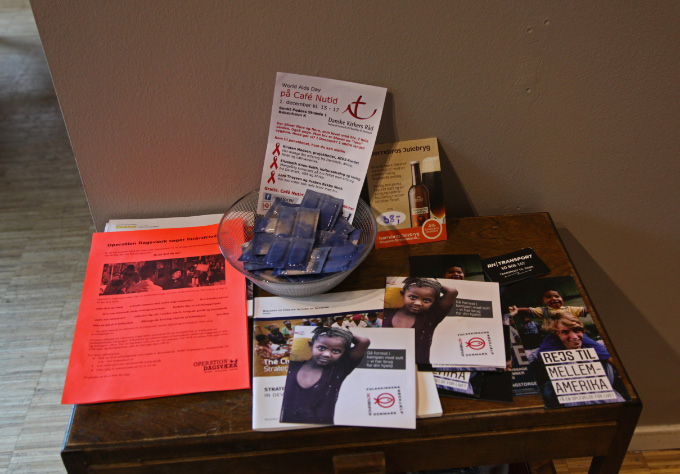 |
|
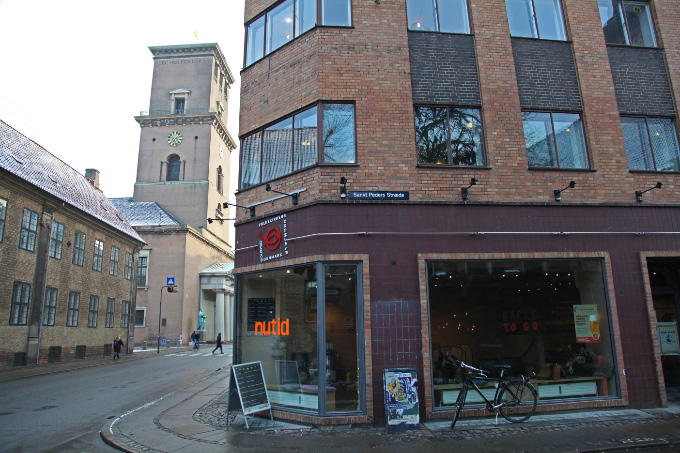 |
| Forget the 1.7 fertility rate one reads about from the latest available statistics for Denmark. Though far below replacement level, this 1.7 figure has been made possible only by Muslim immigrants with dramatically higher fertility rates than those of the lapsed-Christian Danes. Handing out condoms in a bowl inside the "church" meeting center, while promoting in parallel the transfer of resources to Africa and Africans, fits in well in this whole picture. |
|
If one zooms in, one will see that, yes, this "church" cafe and meeting center, Café Nutid of the Church of Denmark, the Danish National Church – Den Danske Folkekirke or simply Folkekirken, that is, the People's Church, is located on Saint Peter's Lane – Sankt Peders Stræde, and yes, a little further up the road and on the viewer's left is the National Cathedral of Denmark, Vor Frue Kirke — The Church of Our Lady, giving its "blessing" to all of this. |
| |
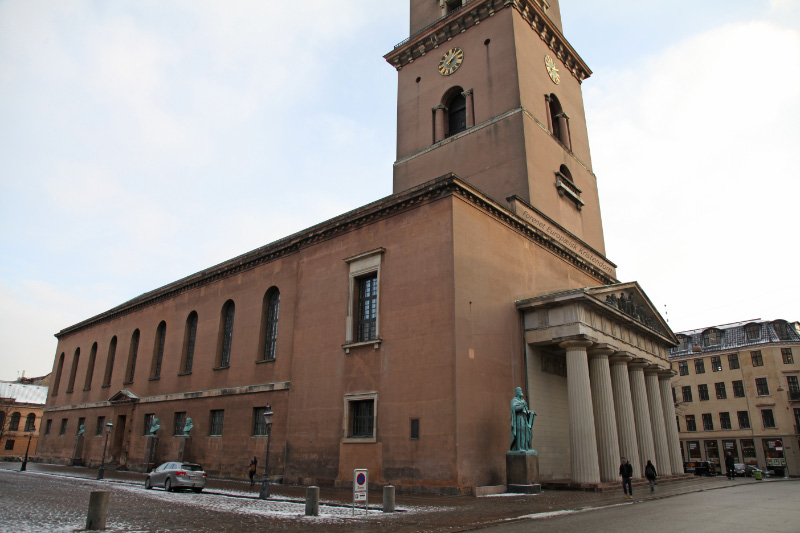 |
— Den Danske Folkekirke — |
| |
|
|
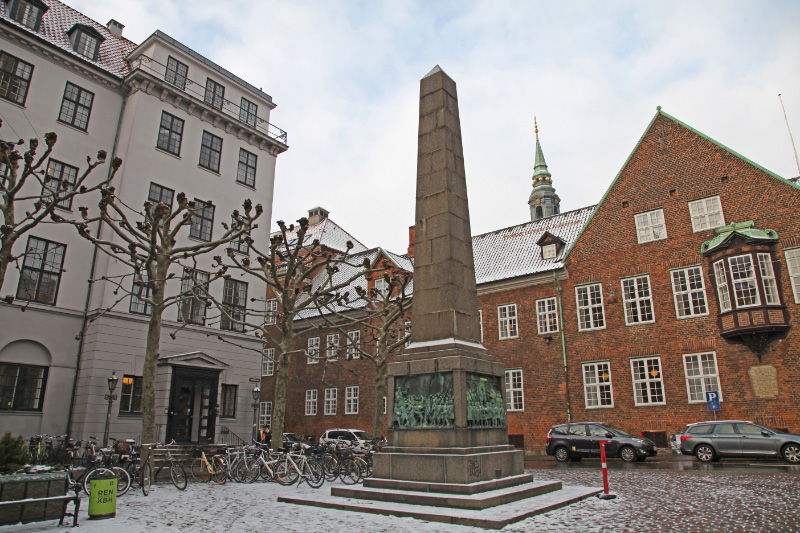 |
|
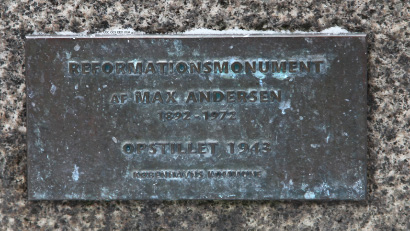
|
| With the spire of Sankt Petri Kirke – Saint Peter's Church visible in the background, the Reformationsmonument lies across the street (Nørregade) from the Danish National (and Copenhagen Diocesan) Lutheran Cathedral, the Church of Our Lady – Vor Frue Kirke, Bispetorvet, Københavns, Dansk. |
|
1943 Anno Domini
|
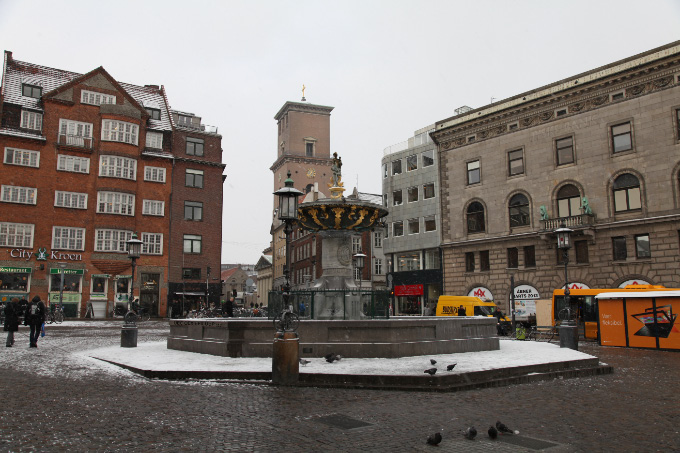
|
|
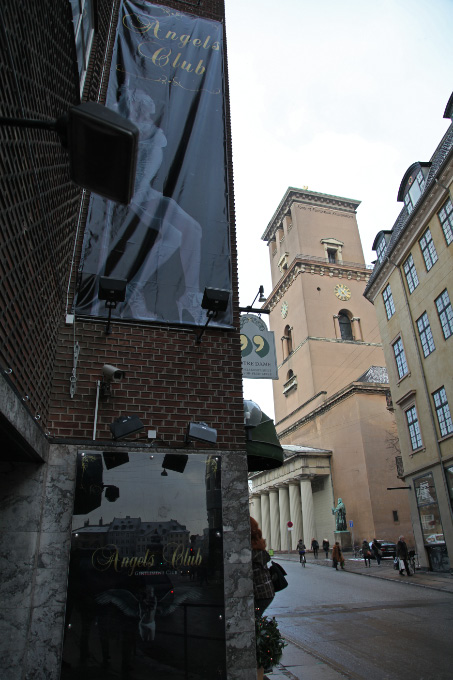 |
| Gammeltorv – Ancient Square, looking on to the National Cathedral of Denmark. |
|
... but first, on Nørregade, we all get to see |
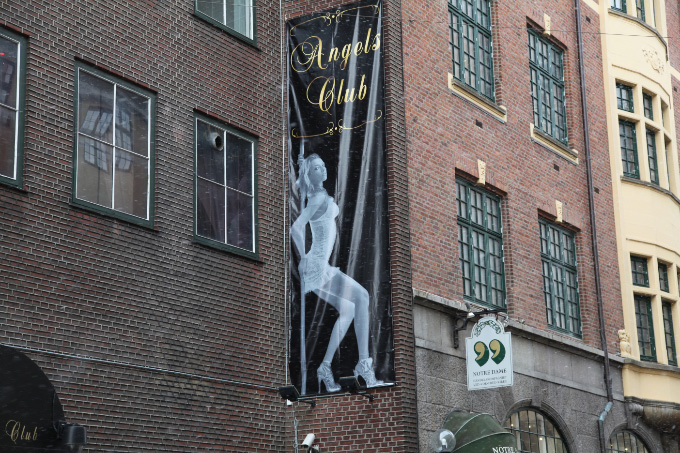
|
|
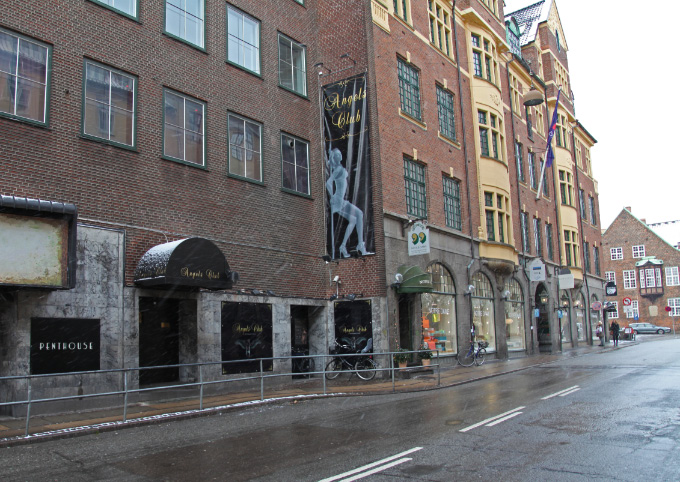 |
| Obviously remarkable, |
|
within the sometime-Protestant, now utterly lapsed-Christian dis-United half-European post-Christendom, |
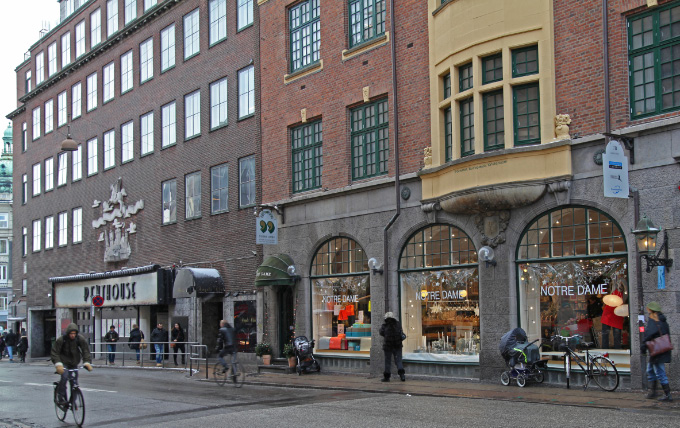
... only for where precisely it is all located. And that is on the same street — Nørregade |
|

|
| |
|
— and diagonally across from the National Lutheran Cathedral of Denmark. |
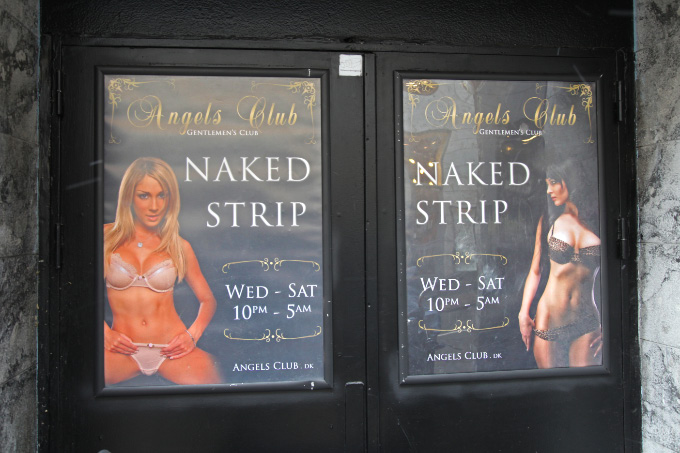 |
|
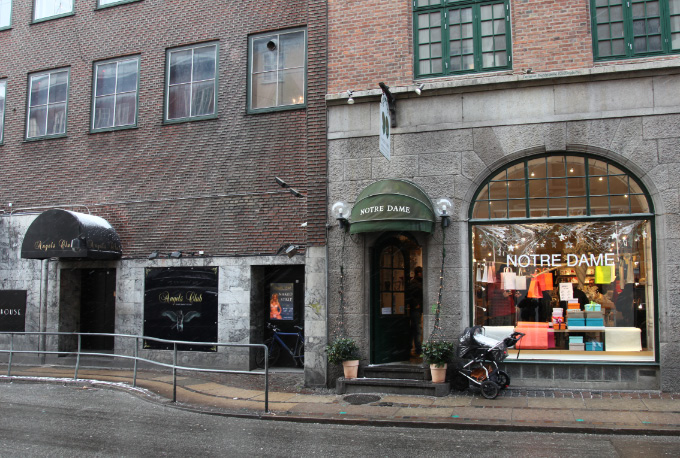 |
And how manly it is, how well the proprietors of all this and the authorities that let it happen and the patrons who keep it happening, how well they demonstrate their manhood. Whose daughters are these? And how womanly too. This is the way to raise men who will honor their wives and children, by showing this to every ten year-old boy who walks by. Of course fidelity in marriage is all we can reasonably expect from men raised on this as boys, right?
|
|
Detestable weaklings and cowards!
And yet there is a certain internal cogency and coherence in all of this, even in its placement next to the seat of Lutheranism in Denmark. It makes homosexual and lesbian "clergy" feel less guilty, less out of place. And the mass acceptance of homosexuality in Denmark and throughout Protestant Europe, and throughout much of European Christendom futher afield from the old countries, the celebration of sodomy by heterosexuals, by people not themselves consumed by that particular disorder, that too makes sense. If even sodomy between men, excuse us, males, is all right, then how much more within the boundaries will be pornography, masturbation, fornication and the abortion and adultery they produce. It all fits rather snuggly.
|
håber
Saint Ansgarius Apostolus Dania
— Ora Pro Nobis —
|
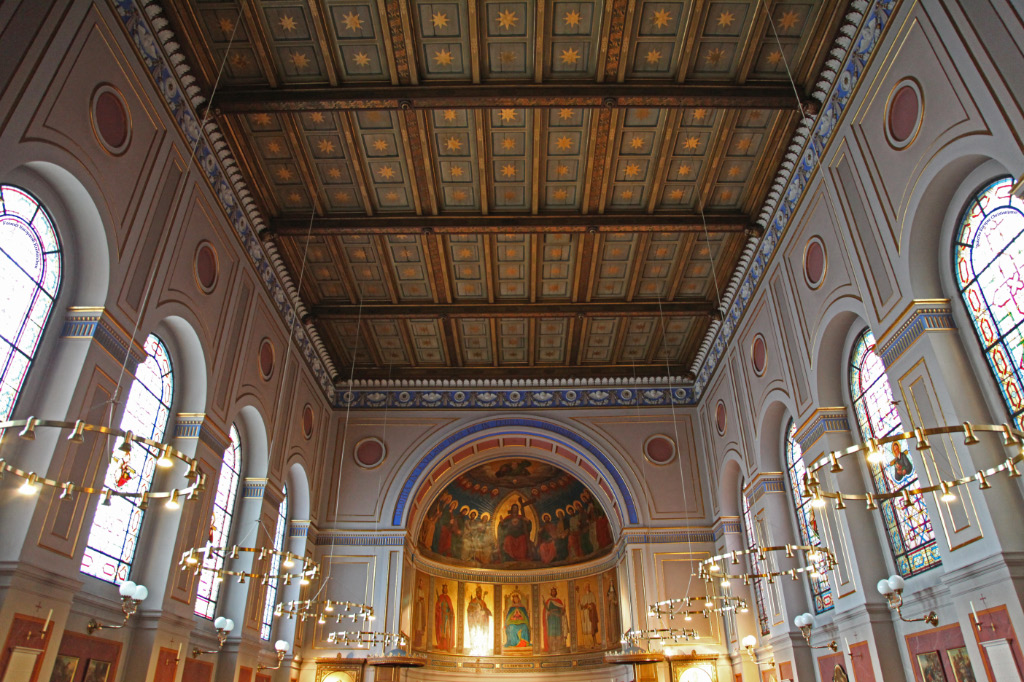 |
|
| |
Sankt Ansgars Katolsk Domkirke — Saint Ansgar's Catholic Cathedral, consecrated 1 November 1842.
|
|
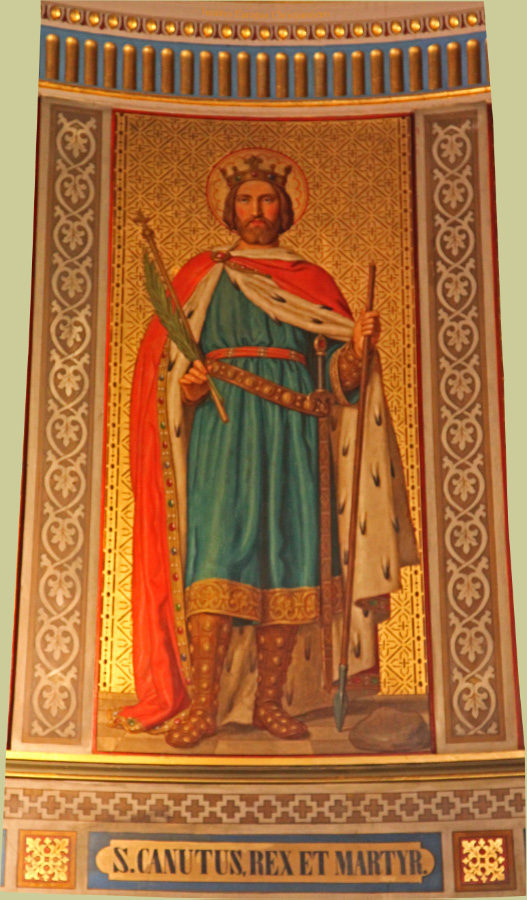 |
|
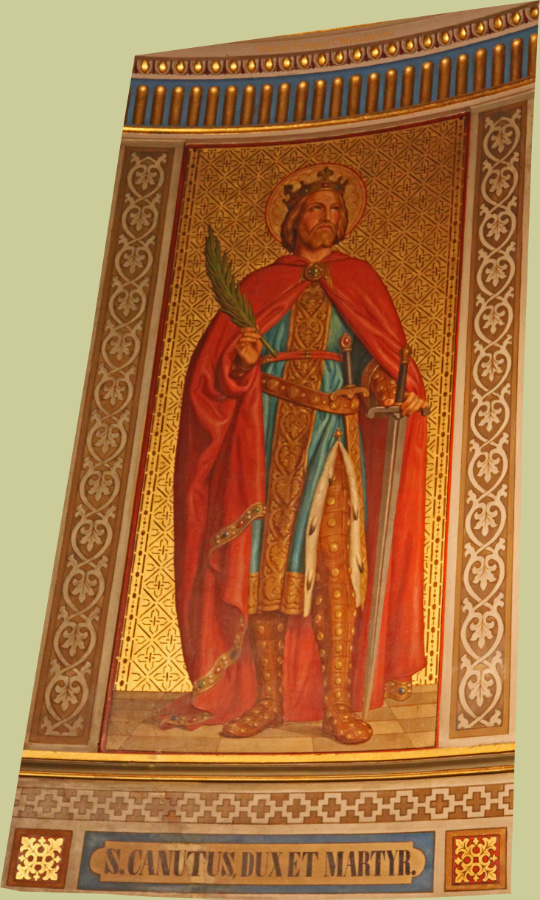 |
Kong Knud Svendsen (IV) af Danmark den Hellige — King Saint Canute (IV) of Denmark,
(* c. 1043, r. from 1080 until martyrdom in Odense, 10 July 1086 †)
Disliked by nobility; issued laws to protect freed thralls — þræll (serfs);
Vigorous champion and patron of the Church; first canonized saint of Denmark. |
|
Saint Canute IV, Olaf I (Oluf Hunger) and Erik I (Erik Ejegod) were brothers.
Sankt Knud Lavard — Duke Saint Canute Lavard was the son of Erik I and so
the nephew of King Saint Canute.
— Hyvä Tuomas joulun tua, paha Knuuti poijes viä — |
| |
|
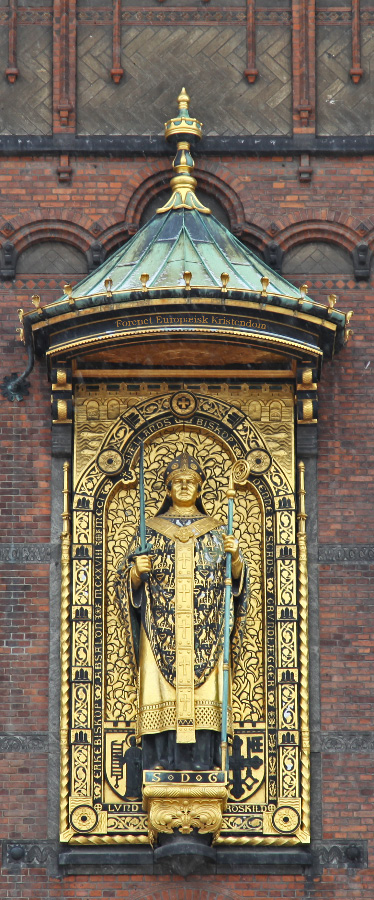 |
| |
|
Basrelief af Absalon på facaden Københavns Rådhus,
(* c. 1128 – 21 March 1201 †) Archbishop and Crusader. |
| |
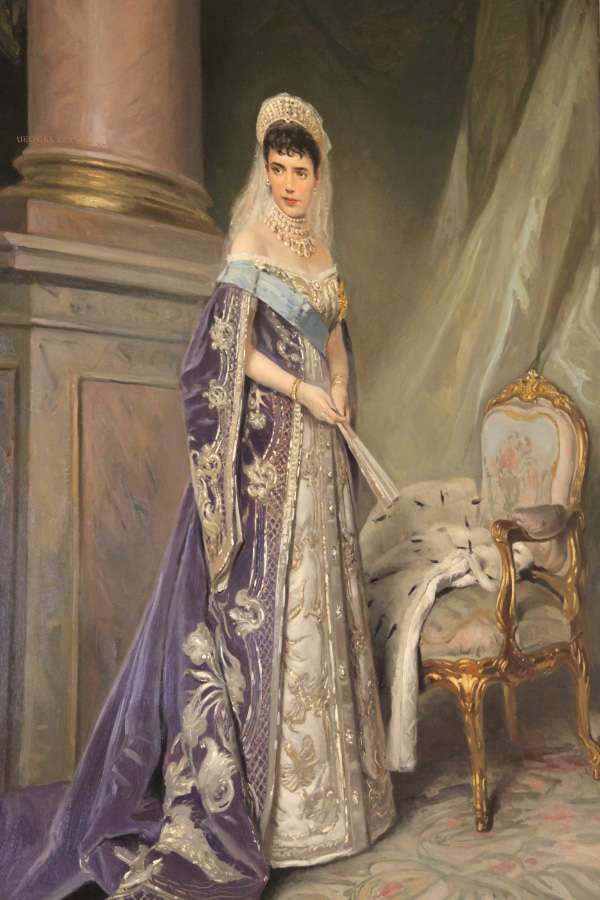 |
|
| |
1912 Portrait by Makovsky in Archangel Saint Michael's Castle – Михайловский Замок |
|
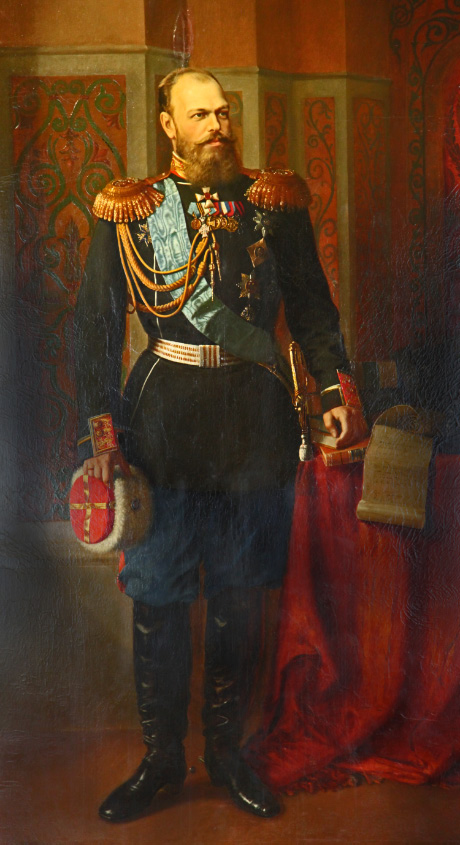 |
|
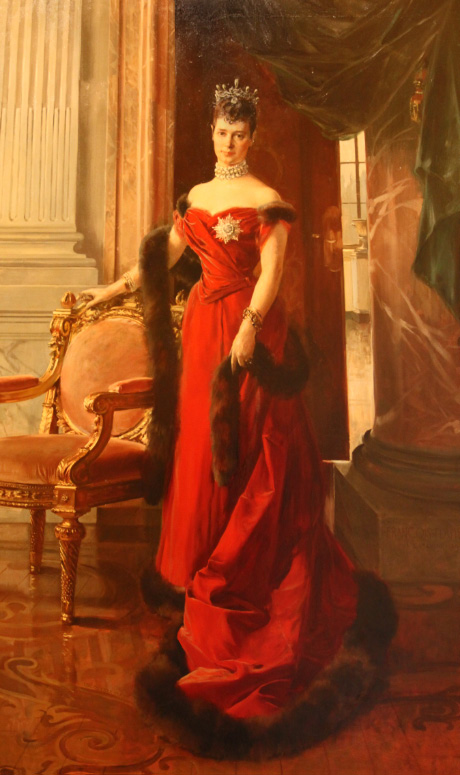 |
|
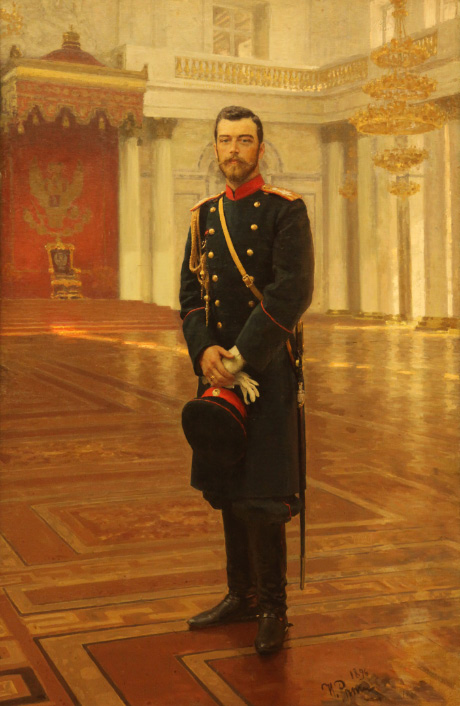 |
His wife ...
Александр III Александрович, Император Всероссийский – Alexander III of Russia (r. 1 March [N.S. 13 March] 1881 – 20 October [N.S. 1 November] 1894 †). Portrait in Archangel Saint Michael's Castle – Михайловский Замок by I.N. Kramskoi – И.Н. Крамской after original by unknown artist.
|
|
Princess Marie Sophie Frederikke Dagmar, born and baptized the "Lutheran" daughter of King Christian IX of Denmark. In 1866 she converted to Orthodoxy and thereafter took the name Мария Фёдоровна – Maria Fyodorovna. Portrait of 1894 by François Flameng (1856-1923) in the Эрмитаж – Hermitage в Санкт-Петербурге in Saint Petersburg.
Before her engagement, then marriage to the future Alexander III on 28 October 1866, Dagmar had been betrothed to Alexander's older brother Nicholas, the Tsarevich – heir apparent of Alexander II, but Nicholas died at the age of 21 in Nice, France of meningitis on 12 [22 N.S.] April 1865, his dying wish actually having been that his fiancée Dagmar would marry his younger brother, which she then did. By all accounts the petite Dagmar–Мария Фёдоровна was very happy with the 1.9 meter and exceedingly strong Alexander, and she bore him six children. Of these six, her second son, Alexander, died during his first year, like her earlier fiancé, of meningitis. Dagmar's husband-emperor died at the age of 49, as Romanov men were wont to do, in 1894, making Dagmar the Dowager Empress from then on. Her third son, George, finally succumbed to tuberculosis in 1899, aged 28. Her first son, Emperor Nicholas II, and her fourth son Michael were both murdered by the Bolsheviks, Michael aged 39, in Perm, four or five days before Nicholas and his family.
A dozen years before these events, in 1906, Michael had proposed marrying a commoner, Alexandra Kossikovskaya. Offering considerable insight into what these royals were all about, Nicholas II and Dagmar were outraged and refused permission to Michael and his intended. So instead Michael — now second in the line of imperial succession to Nicholas II's hemophiliac son, Цесаревич Алексей Николаевич – Tsarevich Alexie — entered into an adulterous relationship with a fellow officer's "wife", Natalia was known variously as Sheremetyevskaya or Mamontov or Wulfert and eventually Брасова–Brasova, by this latter surname after Grand Duke Michael had been made her third "husband" by the Serbian Orthodox Church in Vienna.
Anyway, Мария Фёдоровна-Dagmar's eventful life was to end back in Denmark and at the age of 80, on 13 October 1928, and unlike her four sons, like herself her two daughters did survive to become old women. The mother of seven, Grand Duchess Ксения-Xenia died in London, aged 85, on 20 April 1960, and on 24 November of that same year Grand Duchess Ольга-Olga, the mother of two, died aged 78 in Toronto. |
|
His mother ...
Николай II Александрович – Nicholas II of Russia
Nicholas Romanov reigned from 20 October [N.S. 1 November] 1894 to 2 March [N.S. 15 March] 1917. Portrait of 1896 in Russian Museum in Saint Petersburg by И.Е. Репин – I.Ye. Repin (1844 – 1930).
He was murdered on the night of 17/18 July 1918 in Екатеринбург – Yekaterinburg with his wife and all five children, together with four friends, though not his mother, by a squad of Boshevik cutthroats lead by the atheist Jew Yakov Yurovsky and on the orders of the atheist Jew Yakov Sverdlov. The seven Romanovs — though inexplicably not the four friends, who, unlike the Romanovs, had voluntarily placed themselves in peril out of love and loyalty — were canonized as martyrs by the Russian Orthodox Church. (Have a look at what percentage of saints canonized by the Russian Orthodox Church over the last 1000 years have been either princes or monks.) Between с. 1924 and 1991 the godless Communists actually changed the name of Yekaterinburg to Sverdlovsk – Свердловск after that same sickening Jew, Yakov Sverdlov, and a quarter of a century on from the cessation of the Soviet Soyuz, count on even middle-aged, to say nothing of old Russians, to still say Sverdovsk as often and readily as Yekaterinburg. All this should not be very surprising, and indeed the province-oblast in which the city is located is still called Свердловская область – Sverdlovsk Oblast in 4Q 2015! Just part and parcel of the confused (charitably; otherwise read hypocritical) post-Soviet Russian mindset in places high and low of trying to see and label with some kind of holy continuity that which should be rejected as demonaic dis-continuity.
|
|